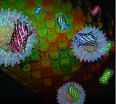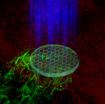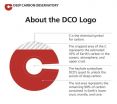(Press-News.org) AMHERST, Mass. - Traditional genomic, proteomic and other screening methods currently used to characterize drug mechanisms are time-consuming and require special equipment, but now researchers led by chemist Vincent Rotello at the University of Massachusetts Amherst offer a multi-channel sensor method using gold nanoparticles that can accurately profile various anti-cancer drugs and their mechanisms in minutes.
As Rotello and his doctoral graduate student Le Ngoc, one of the lead authors, explain, to discover a new drug for any disease, researchers must screen billions of compounds, which can take months. One of the added keys to bringing a new drug to market, they add, is to identify how it works, its chemical mechanism. "Rapid determination of drug mechanism would greatly streamline the drug discovery process, opening the pipeline of new therapeutics," Ngoc says.
She adds, "Drugs with different mechanisms cause changes in the surface of cells that can be read out using the new sensor system. We found that each drug mechanism generated a unique pattern, and we used these cell surface differences to quickly profile different drug mechanisms." Details of this work appear in the current issue of Nature Nanotechnology.
To expedite drug screening, the research team, which in addition to the chemists includes a UMass Amherst cognitive scientist and a materials scientist from Imperial College, London, developed a new, signature-based approach using a gold nanoparticle sensor system and three differently labeled proteins by color: blue, green and red. Using an engineered nanoparticle and three fluorescent proteins provides "a three-channel sensor that can be trained to detect subtle changes in cell surface properties," the authors note.
Drug-induced cell surface changes trigger different sets of fluorescent proteins to turn on together, offering patterns that identify specific cell death mechanisms. The new nanosensor is generalizable to different cell types and does not require processing steps before analysis. So, it offers a simple, effective way to expedite research in drug discovery, toxicology and cell-based sensing, the researchers add.
Some signature-based drug screening using traditional biomarkers exists today, but it requires multi-step cell processing and special equipment, limiting its usefulness the authors point out. With their three-channel, gold nanoparticle sensor platform, Rotello and colleagues solve those challenges and enhance accuracy. Further, they say, "the information-rich output allows the determination of a chemotherapeutic mechanism from a single measurement, providing answers far more quickly (in minutes) than current methods, using standard laboratory instrumentation."
This invention could have a substantial potential impact on the drug discovery pipeline, says Ngoc. "The sensor is not only able to profile mechanisms for individual drugs but also determine the mechanisms of drug mixtures, that is, drug 'cocktails' that are an emerging tool with many therapies," she adds.
Rotello emphasizes, "While we have decent knowledge of individual drugs, we still have a lot to learn about the mechanisms of combination therapies. In addition to drug screening, the simplicity and speed of this enabling technology holds the promise to greatly accelerate the search for effective cancer treatments, and provides a step forward in areas such as toxicology, where the safety of thousands of uncategorized chemicals needs to be assessed.
The researchers point out that their new sensor system offers "a potential way forward for toxicology, providing a viable method to classify the tens of thousands of commercial chemicals for which no data are available."
INFORMATION:
This work was supported by the National Institutes of Health's Institute for General Medical Sciences and by the National Science Foundation's Center for Hierarchical Manufacturing at UMass Amherst.
Researchers have released one of the most comprehensive assessments of the timing and amount of greenhouse gas emissions that each of the world's major economies could produce under different scenarios, i.e. without new climate policies, for the currently discussed pledges, and under a scenario that limits future temperature rise to 2°C. "The pledges made so far lead to earlier emission peaking in many countries, with 1-1.5 °C less total warming than without these policies, but not sufficient to meet the 2oC target. Under the proposed commitments, cumulative CO2 ...
Advocates of biotech crops and those who favor traditional farming practices such as crop diversity often seem worlds apart, but a new study shows that these two approaches can be compatible. An international team led by Chinese scientists and Bruce Tabashnik at the University of Arizona's College of Agriculture and Life Sciences discovered that the diverse patchwork of crops in northern China slowed adaptation to genetically engineered cotton by a wide-ranging insect pest. The results are published in the advance online edition of Nature Biotechnology.
Genetically engineered ...
Predictions of Greenland ice loss and its impact on rising sea levels may have been greatly underestimated, according to scientists at the University of Leeds.
The finding follows a new study, which is published today in Nature Climate Change, in which the future distribution of lakes that form on the ice sheet surface from melted snow and ice - called supraglacial lakes - have been simulated for the first time.
Previously, the impact of supraglacial lakes on Greenland ice loss had been assumed to be small, but the new research has shown that they will migrate farther ...
Sparks literally fly when a sperm and an egg hit it off. The fertilized mammalian egg releases from its surface billions of zinc atoms in "zinc sparks," one wave after another, a Northwestern University-led interdisciplinary research team has found.
Using cutting-edge technology they developed, the researchers are the first to capture images of these molecular fireworks and pinpoint the origin of the zinc sparks: tiny zinc-rich packages just below the egg's surface.
Zinc fluctuations play a central role in regulating the biochemical processes that ensure a healthy ...
When someone you know is wearing an unfamiliar hat, you might not recognize them. Georgia Institute of Technology researchers are using just such a disguise to sneak biomaterials containing peptide signaling molecules into living animals.
When the disguised peptides are needed to launch biological processes, the researchers shine ultraviolet light onto the molecules through the skin, causing the "hat" structures to come off. That allows cells and other molecules to recognize and interact with the peptides on the surface of the material.
This light-activated triggering ...
BOSTON - December 15, 2014 - In a study published today by Nature, researchers at Joslin Diabetes Center used a microscopic worm (C. elegans) to identify a new path that could lead to drugs to slow aging and the chronic diseases that often accompany it--and might even lead to better cosmetics.
The Joslin team looked at how treatments known to boost longevity in the one-millimeter long C. elegans (including calorie restriction and treatment with the drug rapamycin) affected the expression of genes that produce collagen and other proteins that make up the extra-cellular ...
New research into an Icelandic eruption has shed light on how the Earth's crust forms, according to a paper published today in Nature.
When the Bárðarbunga volcano, which is buried beneath Iceland's Vatnajökull ice cap, reawakened in August 2014, scientists had a rare opportunity to monitor how the magma flowed through cracks in the rock away from the volcano. The molten rock forms vertical sheet-like features known as dykes, which force the surrounding rock apart.
Study co-author Professor Andy Hooper from the Centre for Observation and Modelling ...
The carbon in the atmosphere, ocean, surface life, and other shallow, near surface reservoirs accounts for only about 10% of Earth's carbon. Where is the other 90%? What is it doing? Does it matter?
The Deep Carbon Observatory (DCO), an ambitious 10-year (2009-2019) program of exploration and experimentation, pursues the mysterious 90% while building a new scientific field with a network of scientists from more than 40 countries. Recent results from DCO researchers are filling in the global carbon puzzle with findings that extend our understanding of the origins and limits ...
Researchers at Yale and Boston University and their Russian collaborators have found that occasional heroin use by HIV-positive patients may be particularly harmful to the immune system and worsens HIV disease, compared to persistent or no heroin use.
The findings are published in the journal AIDS and Behavior.
"We expected that HIV-positive patients who abused heroin on an ongoing basis would have the greatest decreases in their CD4 count, but this preliminary study showed that those who abused heroin intermittently had lower CD4 cell counts, indicating a weakened ...
The introduction of neutral umpires in Test cricket led to a drop in the number of LBW decisions going in favour of home teams, a study has revealed.
The findings from research by economists, published by the Journal of the Royal Statistical Society, come amidst renewed debate on whether neutral umpiring is still required in Test matches following the introduction of the Decision Review System (DRS).
Economists Dr Abhinav Sacheti and Professor David Paton from Nottingham University Business School and Dr Ian Gregory-Smith from the University of Sheffield analysed Leg ...





